Hey there! Looking to kickstart your daily sketchbook practice? Well, you’ve come to the right place! In this article, I’ll be sharing many sketchbook ideas that’ll ignite your creativity and keep you motivated on your artistic journey.
Whether you’re a beginner or a seasoned artist, these ideas will provide endless possibilities to explore and express your unique style. So, grab your sketchbook, and let’s dive into a daily sketching adventure that’ll bring joy and fulfillment to your creative practice.
Let’s get started!
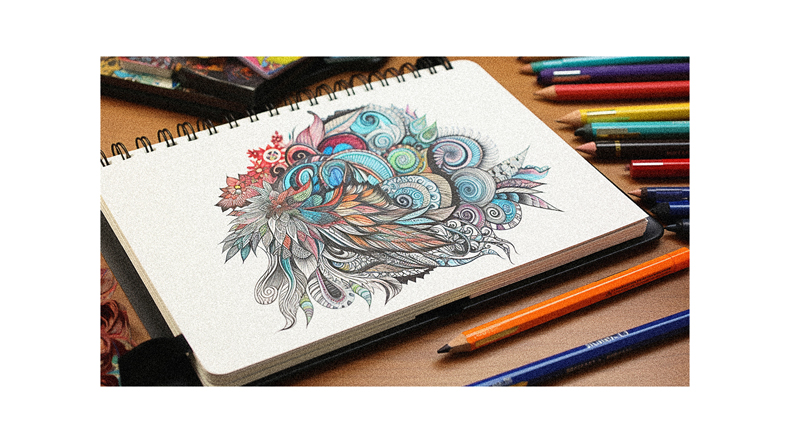
Easy Drawing Ideas
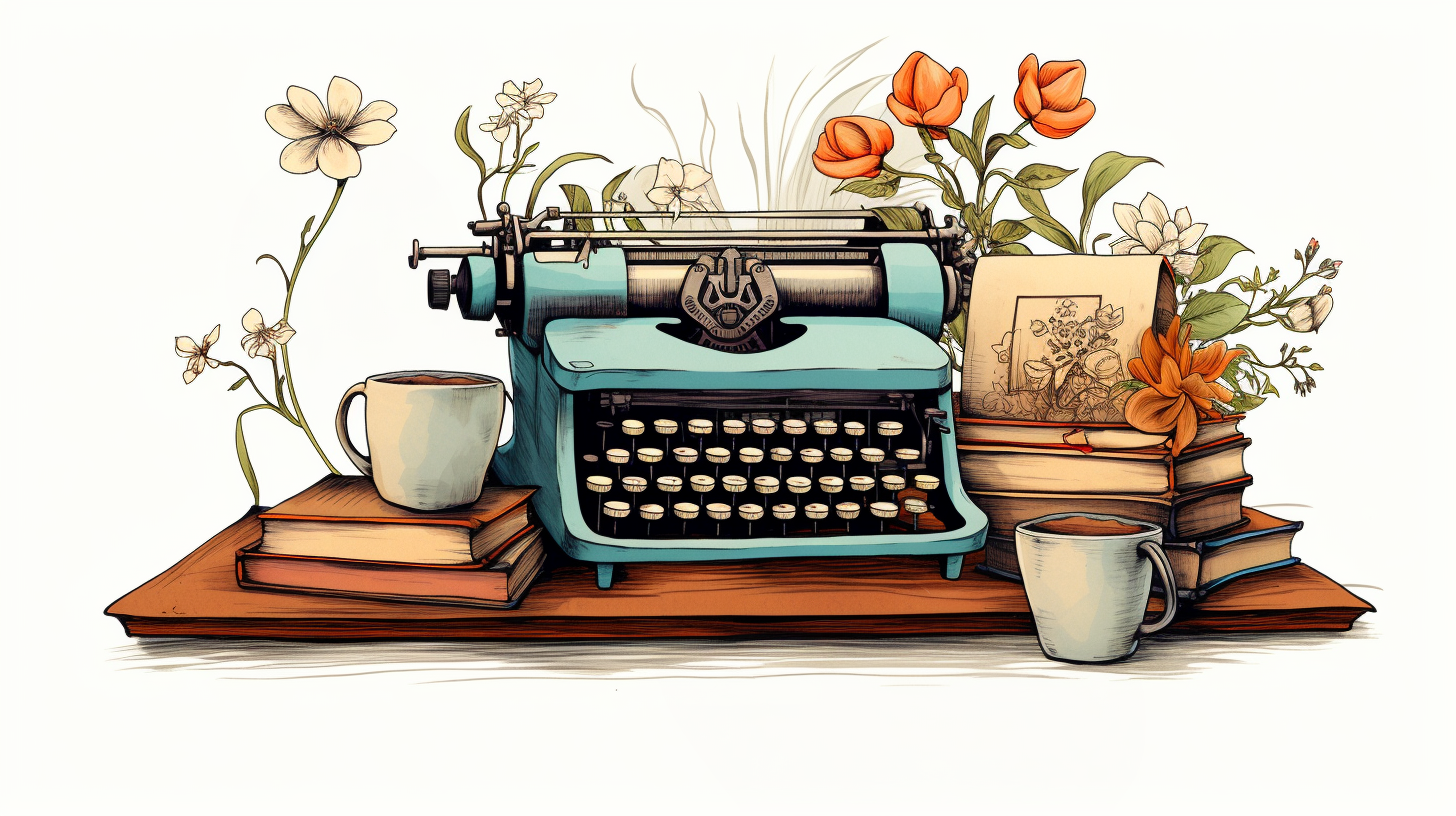
One easy drawing idea I suggest is to sketch an old pair of shoes. You can find a pair of worn-out shoes, maybe with some interesting textures and details, and use them as your subject.
Start by lightly sketching the basic shape of the shoes, focusing on the outline and proportions. Then, add details like the laces, stitching, and any unique patterns or textures. Don’t worry about making it perfect, enjoy the process of capturing the essence of the shoes.
You can use different shading techniques to give the drawing more depth and dimension. It’s a simple yet rewarding subject to draw, allowing you to practice observation skills and explore different textures in your artwork.
Drawing From Imagination

I love challenging myself by drawing scenes from history without any photo references. It allows me to tap into my imagination and bring these historical moments to life on paper.
When I draw from imagination, I can interpret the scene in my unique way, adding my artistic flair. It’s a thrilling experience to envision how people and places looked in the past, relying solely on my imagination and knowledge of history.
I enjoy researching the period and studying the clothing, architecture, and other details to ensure accuracy in my drawings. Drawing from imagination improves my artistic skills and deepens my understanding and appreciation of history.
Up for a Challenge
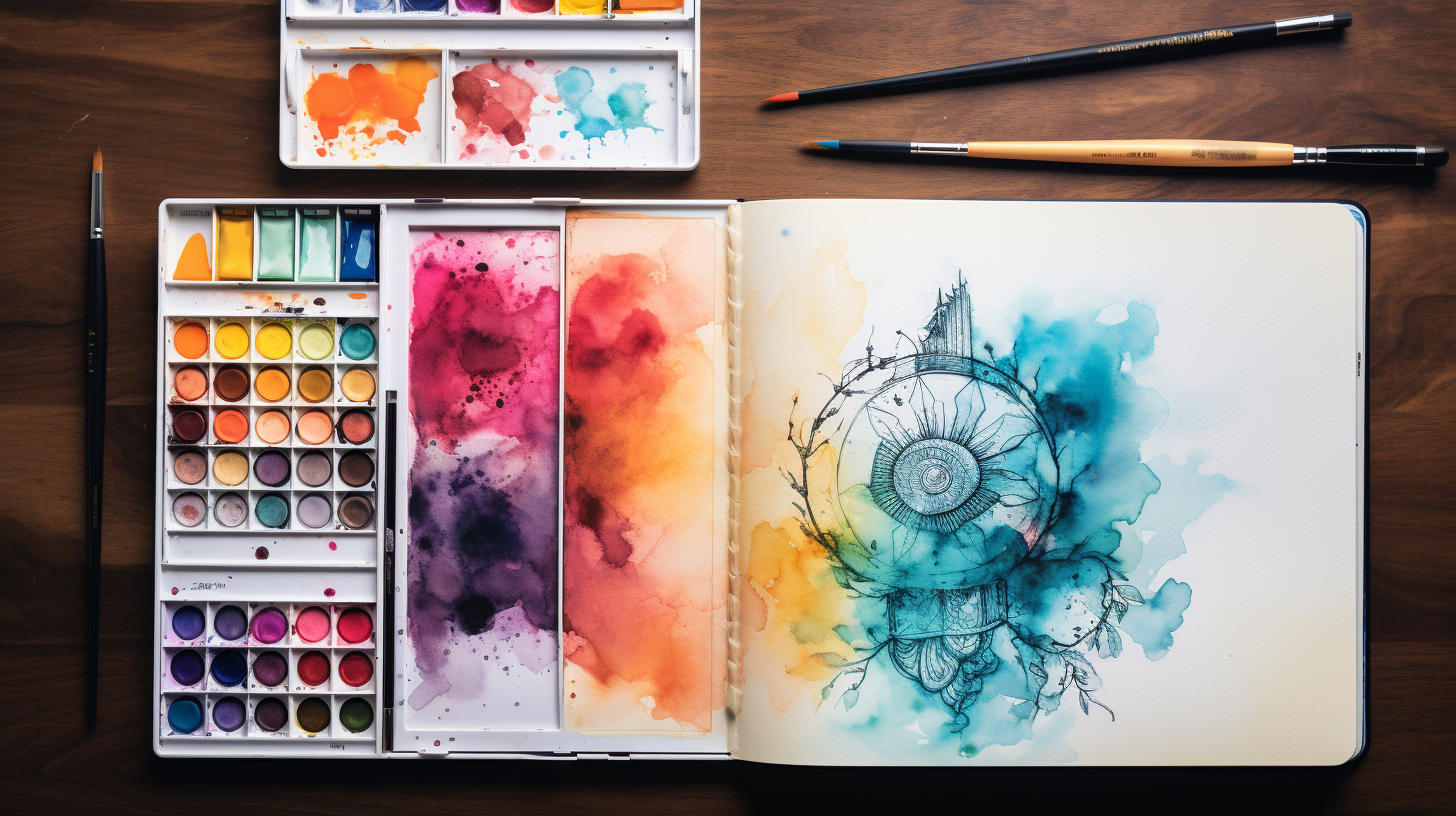
Bring it on! I’m ready for a challenge in my sketchbook. As an artist, I thrive on pushing my skills to new heights, and what better way to do that than by taking on difficult subjects?
One of my favorite challenges is drawing a glass of water. Capturing its transparency and how light interacts with it requires precision and attention to detail.
Another challenging subject is a pile of unfolded laundry. The intricate folds and textures test my ability to depict realism.
And let’s not forget about using my non-dominant hand! It’s a humbling experience that forces me to slow down and focus on my technique.
These challenges may be tough, but they’re incredibly rewarding when I see my progress in my sketchbook.
Objects to Draw
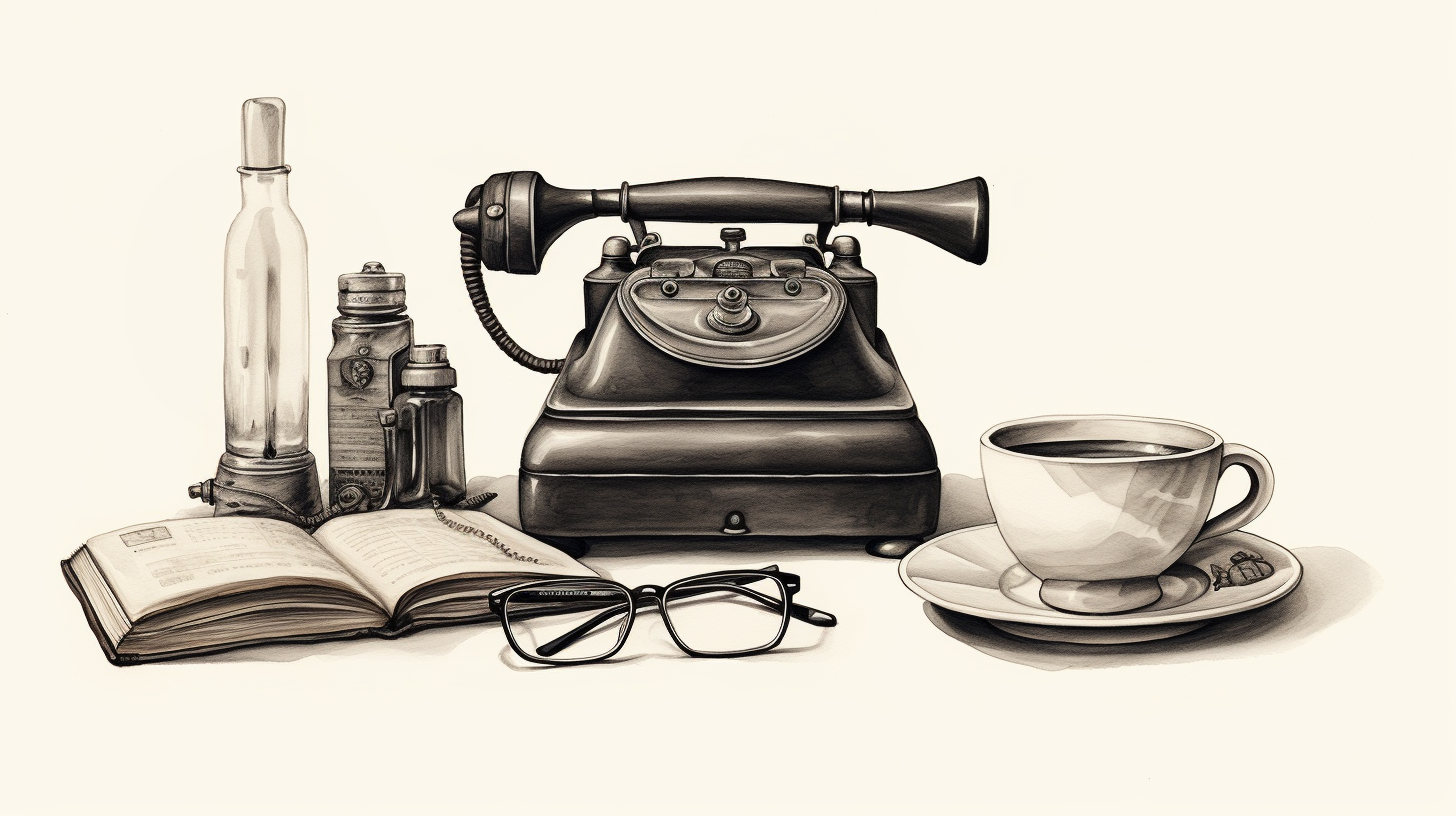
When looking for inspiration in my sketchbook, I often gravitate toward objects with interesting textures and shapes that I can experiment with and explore. Drawing these objects allows me to challenge myself and improve my skills.
Here are five objects that I find particularly intriguing to draw:
- Old camera: The intricate details and mechanical components provide a great opportunity to practice shading and capturing fine lines.
- Pair of glasses: The lenses’ reflective surfaces and unique shapes offer a fun challenge in capturing light and perspective.
- Bicycle: The complex structure and various angles of a bicycle make it an interesting subject to study and draw.
- Metal objects: Objects like keys or utensils provide a chance to practice rendering different textures and exploring light and shadow.
- Tree bark up close: The organic patterns and rough textures of tree bark offer a unique opportunity to experiment with different mark-making techniques.
Nature and Outdoor Themes
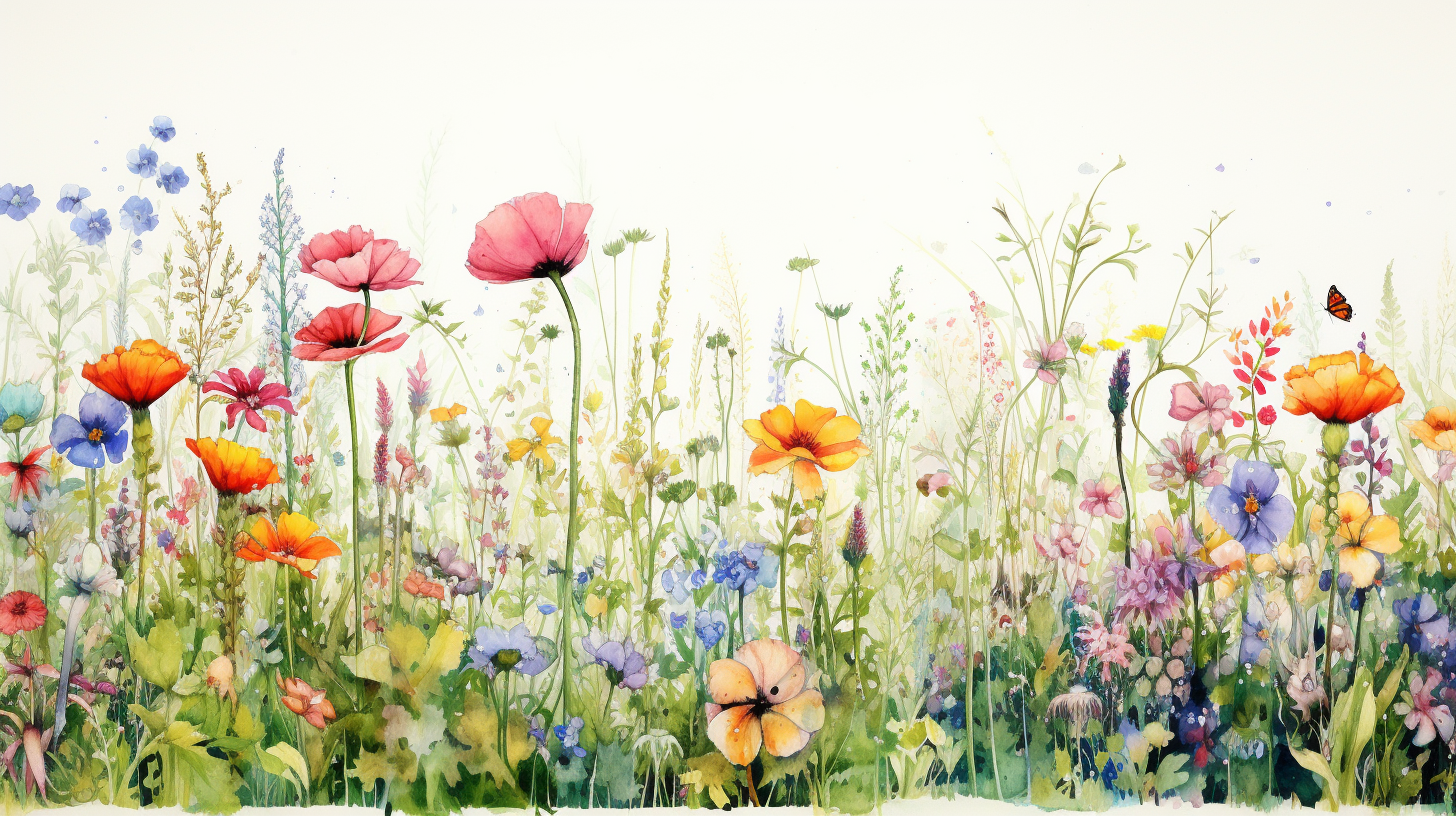
Often, I find myself drawn to sketching nature and outdoor themes as a way to connect with the beauty and tranquility of the world around me. There’s something incredibly calming about sitting outside and capturing the delicate details of a flower or the majestic movement of ocean waves.
Nature offers an endless array of subjects to explore, from the intricate patterns of tree bark up close to the vibrant colors of flowers in a vase. Sketching these scenes allows me to immerse myself in the natural world, to appreciate its wonders and to share my interpretation with others.
Whether I’m sketching a pile of rocks or the lush foliage of bushes and shrubbery, nature always inspires me to create and to appreciate the simple beauty that surrounds us.
Urban and Industrial Subjects

I love exploring urban and industrial subjects in my sketchbook, as they offer a unique glimpse into the city’s vibrant energy and architectural marvels.
It’s fascinating to capture the intricate details of old cabins or factories that hold stories of the past.
Sailboats gracefully gliding on the water or the serene beauty of a creek in the woods provide a sense of tranquility.
And there’s nothing quite like capturing the view from a window, framing the bustling streets and towering buildings.
Sketching these subjects allows me to appreciate the beauty of urban landscapes and the impact of human activity on the environment.
It’s a way for me to document and celebrate the dynamic nature of the cityscape.
Everyday Objects
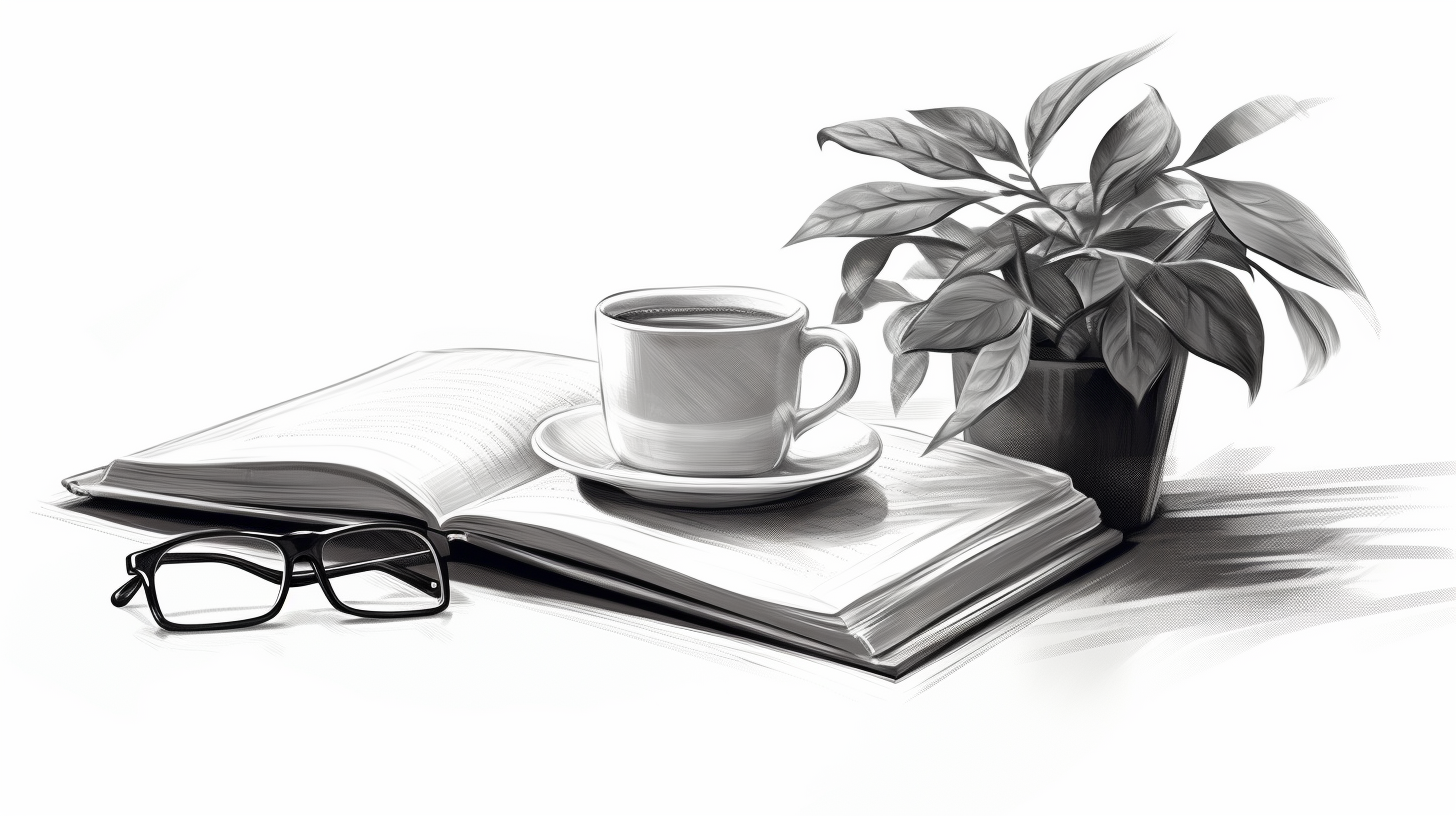
The cup of pencils is one of my favorite everyday objects to sketch in my sketchbook. I love the way the pencils are neatly arranged, their vibrant colors standing out against the white cup. Each pencil has its unique shape and texture, making it a fun challenge to capture their details on paper.
I enjoy experimenting with different shading techniques to bring depth and dimension to my sketches. Sometimes, I even incorporate the cup into the composition, using its curves and shadows to add interest to the drawing.
Sketching everyday objects like the cup of pencils not only helps me practice my drawing skills, but also allows me to appreciate the beauty in the ordinary things around me.
Animals and Creatures
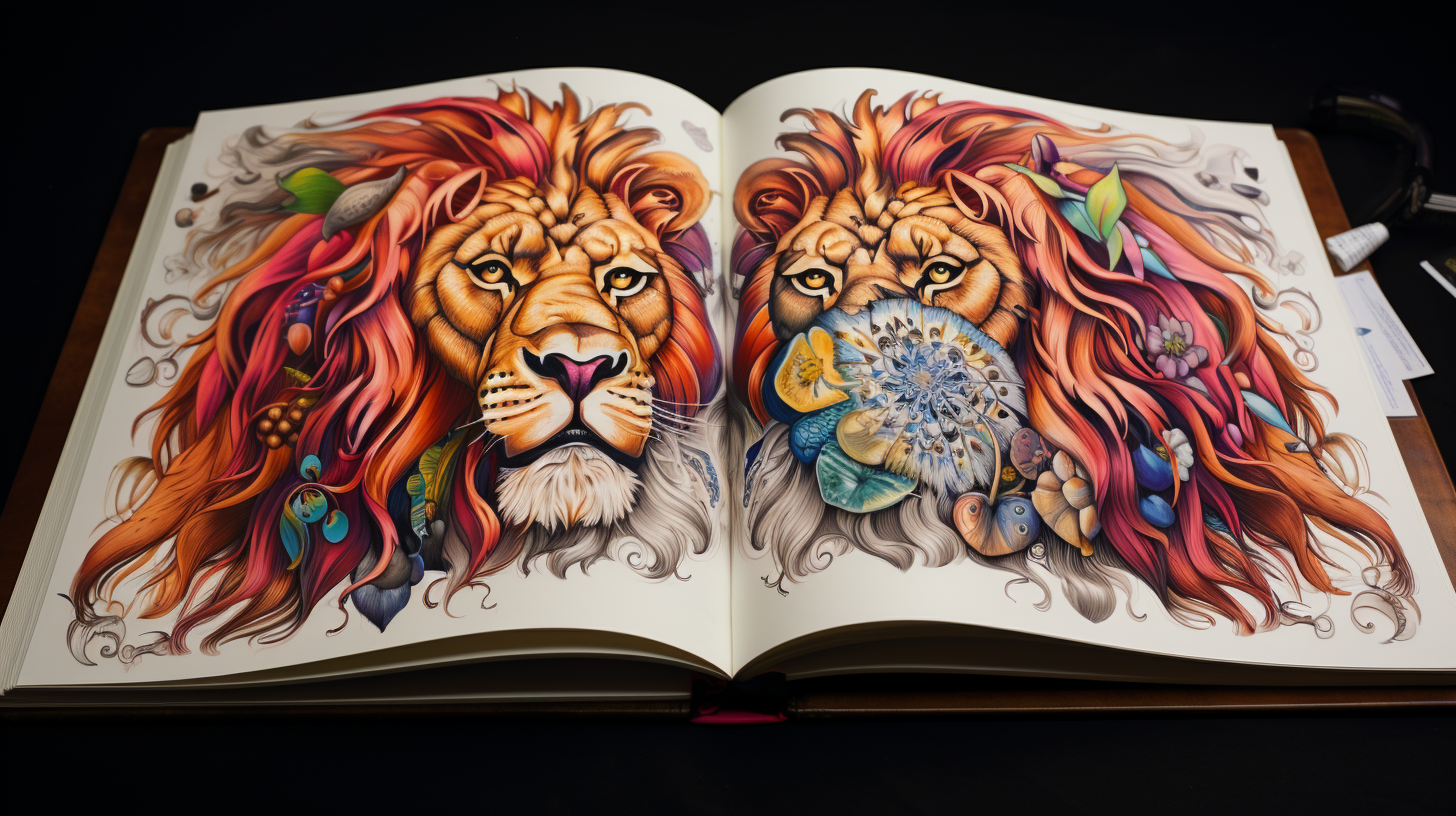
One of my favorite ways to challenge myself in my daily sketchbook practice is by sketching animals and creatures, using my imagination to bring them to life on the page. It’s incredible how many different creatures I can create just by combining different features and characteristics.
Here are a few ideas to get you started:
- Sketch your favorite sea creature: Whether it’s a majestic dolphin or a mystical mermaid, let your imagination run wild with the creatures of the ocean.
- Draw your favorite insect: From fluttering butterflies to creepy-crawly spiders, insects offer various shapes and textures to explore.
- Create an exotic fish: Dive into the depths of your imagination and design a unique and colorful fish that could only exist in your sketchbook.
- Capture the delicate beauty of a feather: Feathers are a fascinating subject to study and sketch, with their intricate patterns and graceful curves.
- Depict a bird in flight: Birds in motion can be a challenging yet rewarding subject to capture. Try to convey the sense of movement and freedom in your sketch.
Let your creativity soar as you bring these animals and creatures to life on the pages of your sketchbook.
Human Figures and Portraits
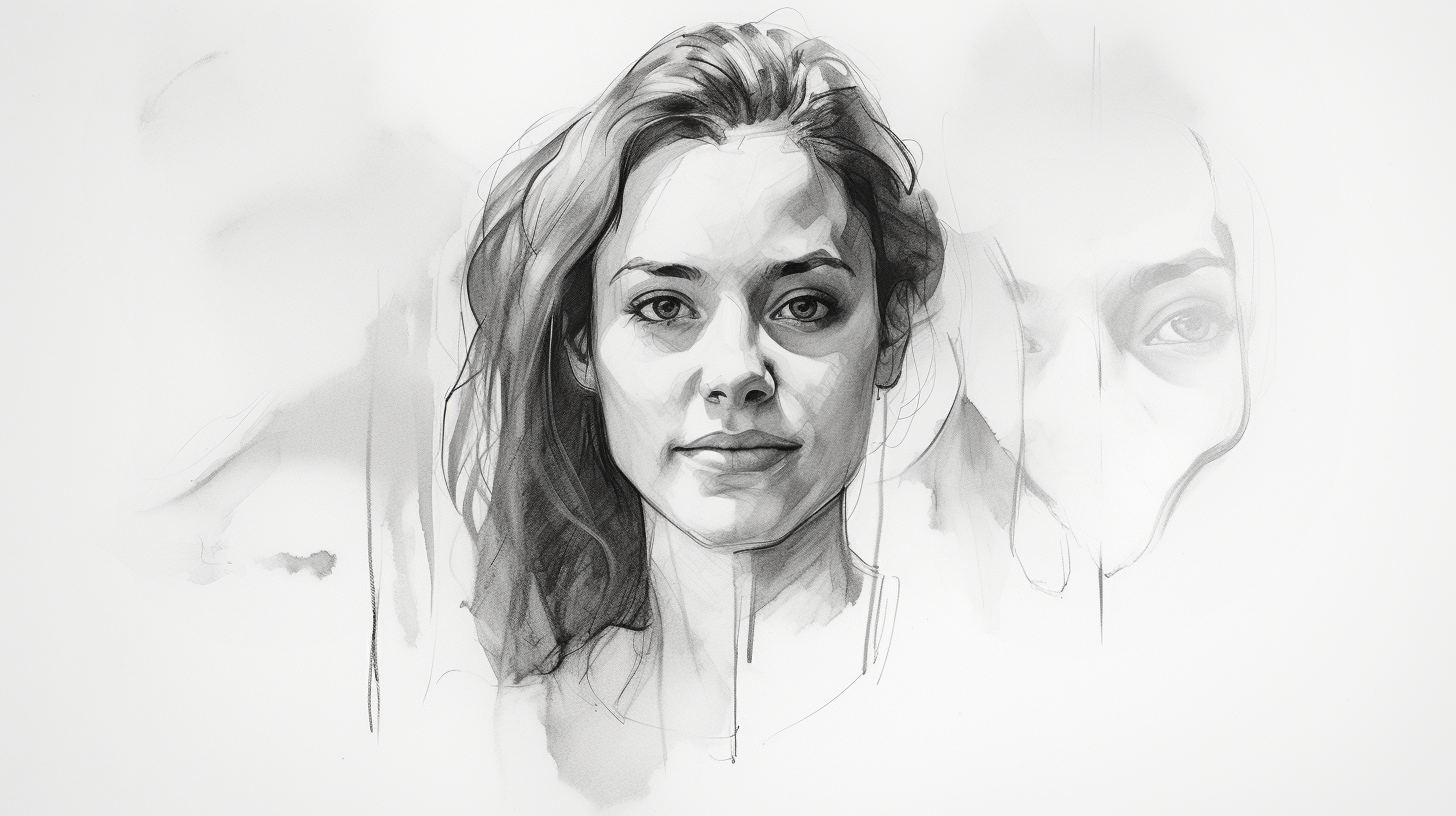
My favorite way to challenge myself in my daily sketchbook practice is by sketching human figures and portraits, capturing different individuals’ unique expressions and features.
There’s something so fascinating about trying to capture the essence of a person through lines and shading. I love the challenge of capturing the subtle nuances of facial expressions, how a person’s eyes light up, or the curve of their smile.
It’s a constant exercise in observation and interpretation. Each portrait is a new opportunity to explore different techniques and push myself to improve. Whether it’s a quick sketch or a more detailed rendering, capturing the human form on paper is a rewarding and fulfilling practice.
Textures and Patterns
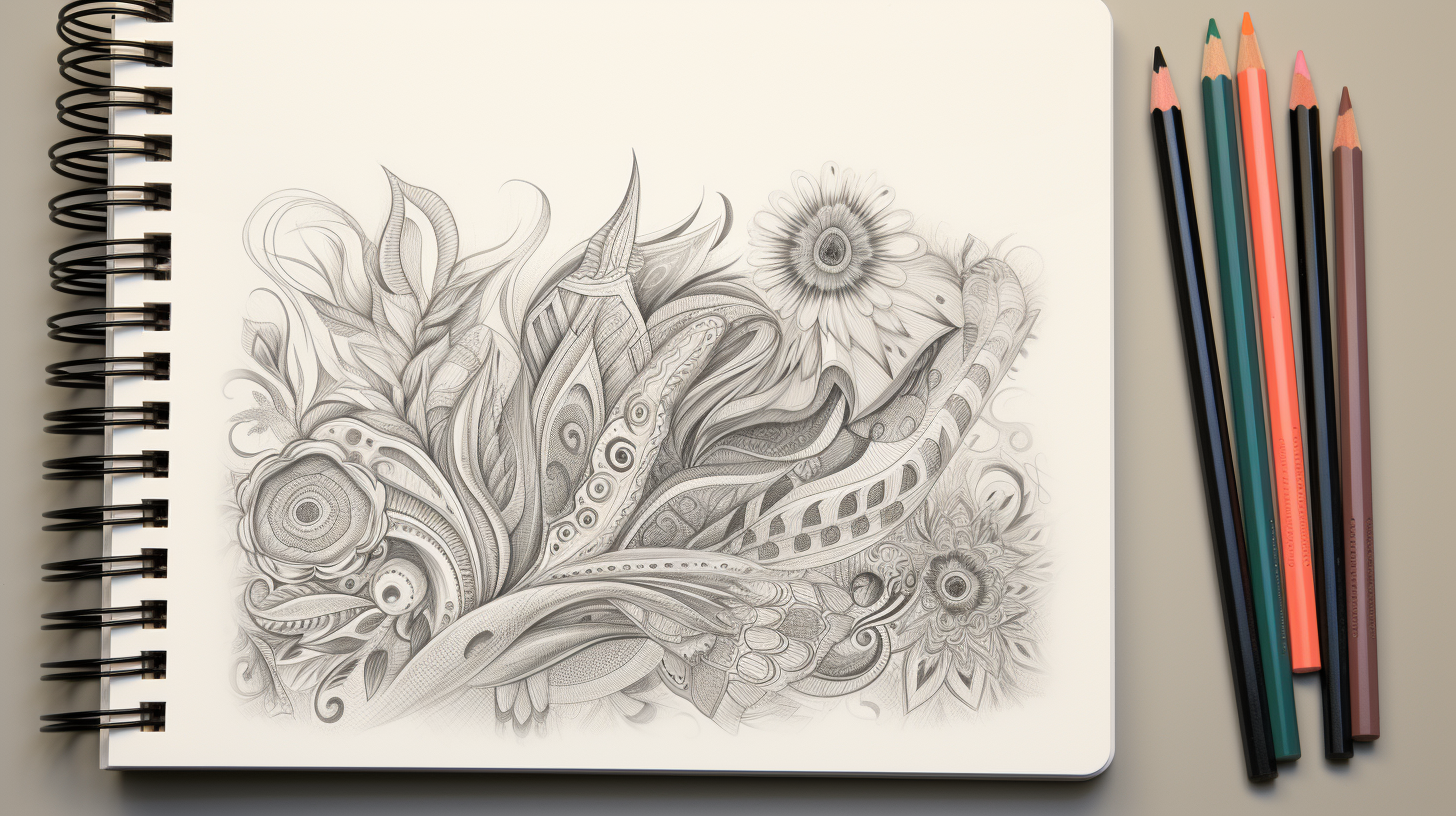
How can I incorporate different textures and patterns into my daily sketchbook practice?
Exploring and experimenting with various textures and patterns is important to add interest and depth to your artwork. Here are some ways to incorporate them into your sketchbook practice:
- Create a close-up sketch of grass, capturing the intricate texture of each blade.
- Sketch a patterned cloth on a table, focusing on the repetition and details of the design.
- Study a close-up of jewelry, capturing the intricate patterns and textures of the metal and gemstones.
- Explore the texture and movement of hair, whether it’s flowing or tightly curled.
- Sketch the hung drapery, paying attention to the folds and creases that create interesting patterns.
Challenging Objects and Concepts
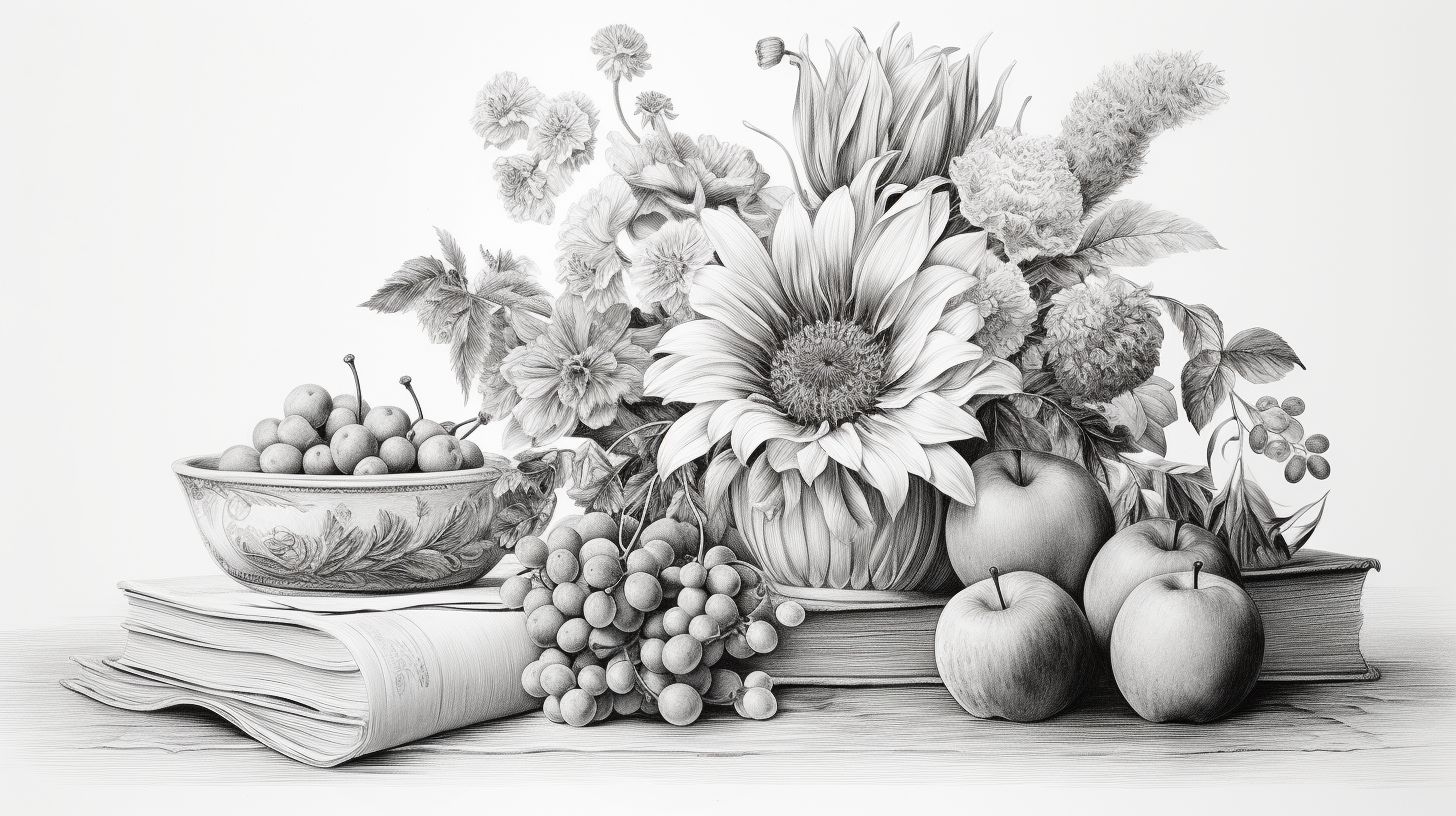
Trying to draw a detailed machine can be challenging, but it’s a great opportunity to improve my skills and push my artistic boundaries. Machines are complex objects with intricate parts and mechanisms which require careful observation and attention to detail.
By taking on the challenge of drawing a machine, I can enhance my understanding of form, perspective, and shading. It allows me to practice precision and accuracy in my drawings and develop my patience and perseverance.
Moreover, tackling challenging objects like machines helps me expand my artistic repertoire and explore new subjects I may not have considered before. It’s a rewarding experience to see myself grow as an artist by taking on difficult concepts and objects in my sketchbook practice.
Dynamic and Moving Subjects

Water coming from the faucet is a captivating subject to sketch, as it captures movement’s dynamic and fluid nature. The way the water flows and splashes can create interesting shapes and patterns that challenge the artist’s ability to capture motion on paper.
Sketching dynamic and moving subjects like water can help improve observation skills and understanding of the human eye’s ability to perceive motion.
- The swirling motion of water as it goes down the drain
- The movement of water droplets as they fall from a faucet
- The splashing and splattering of water when it hits a surface
- The ripples and waves created when water is disturbed
- The reflection of light on the surface of water
Scavenger Hunt Challenge
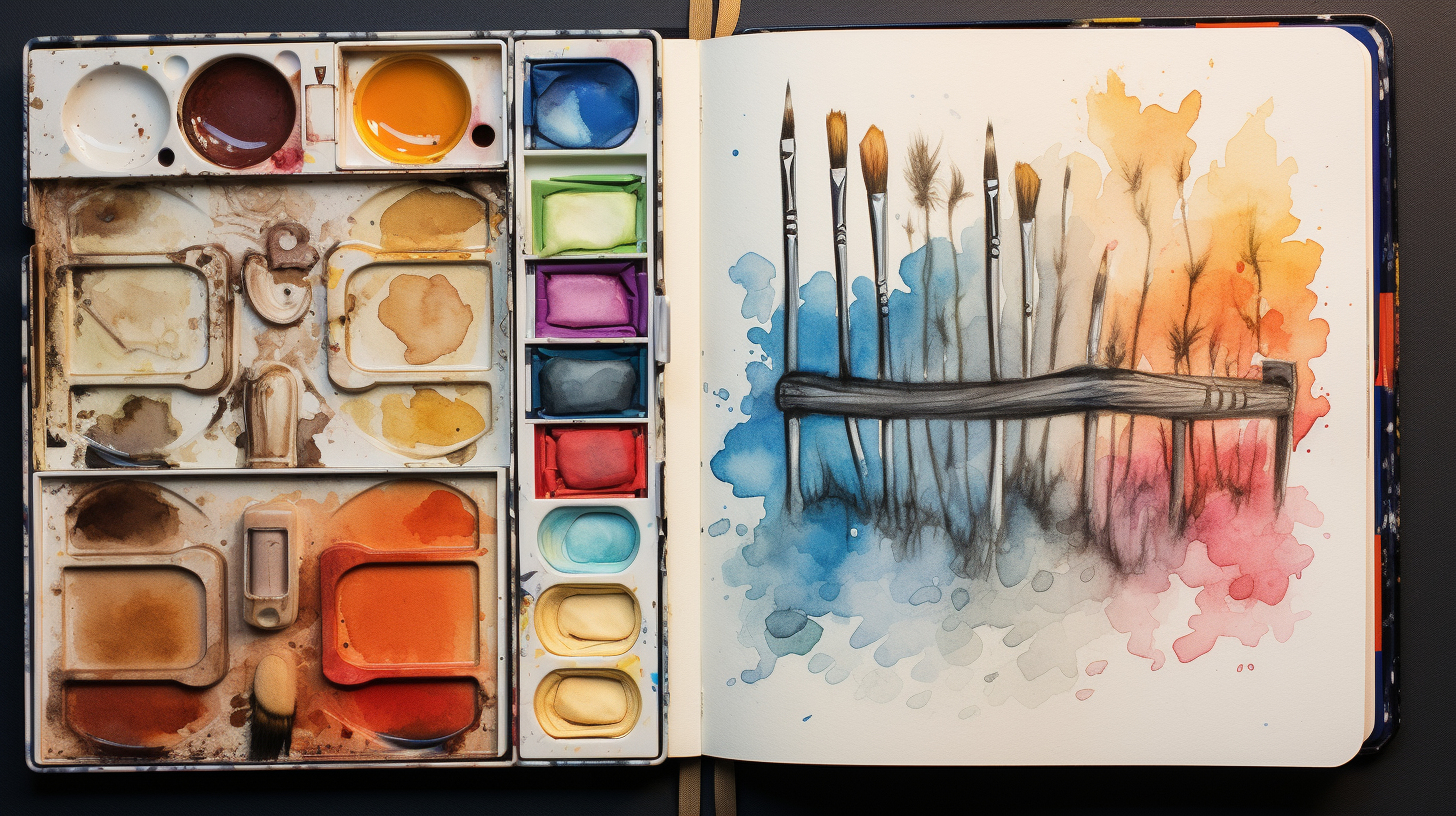
I absolutely loved taking on the Scavenger Hunt Challenge in my sketchbook! It was such a fun and creative way to push myself and explore different subjects.
I started by drawing all the suggested objects, like an old pair of shoes, a stack of books, and even a glass of water. It was challenging at first, but as I continued, I noticed my skills improving and my confidence growing.
It was fascinating to compare my first sketch to my last one and see the progress I made over time. The Scavenger Hunt Challenge really allowed me to experiment with different techniques and styles, and I can’t wait to continue exploring more drawing ideas in my sketchbook.
Finding More Drawing Ideas
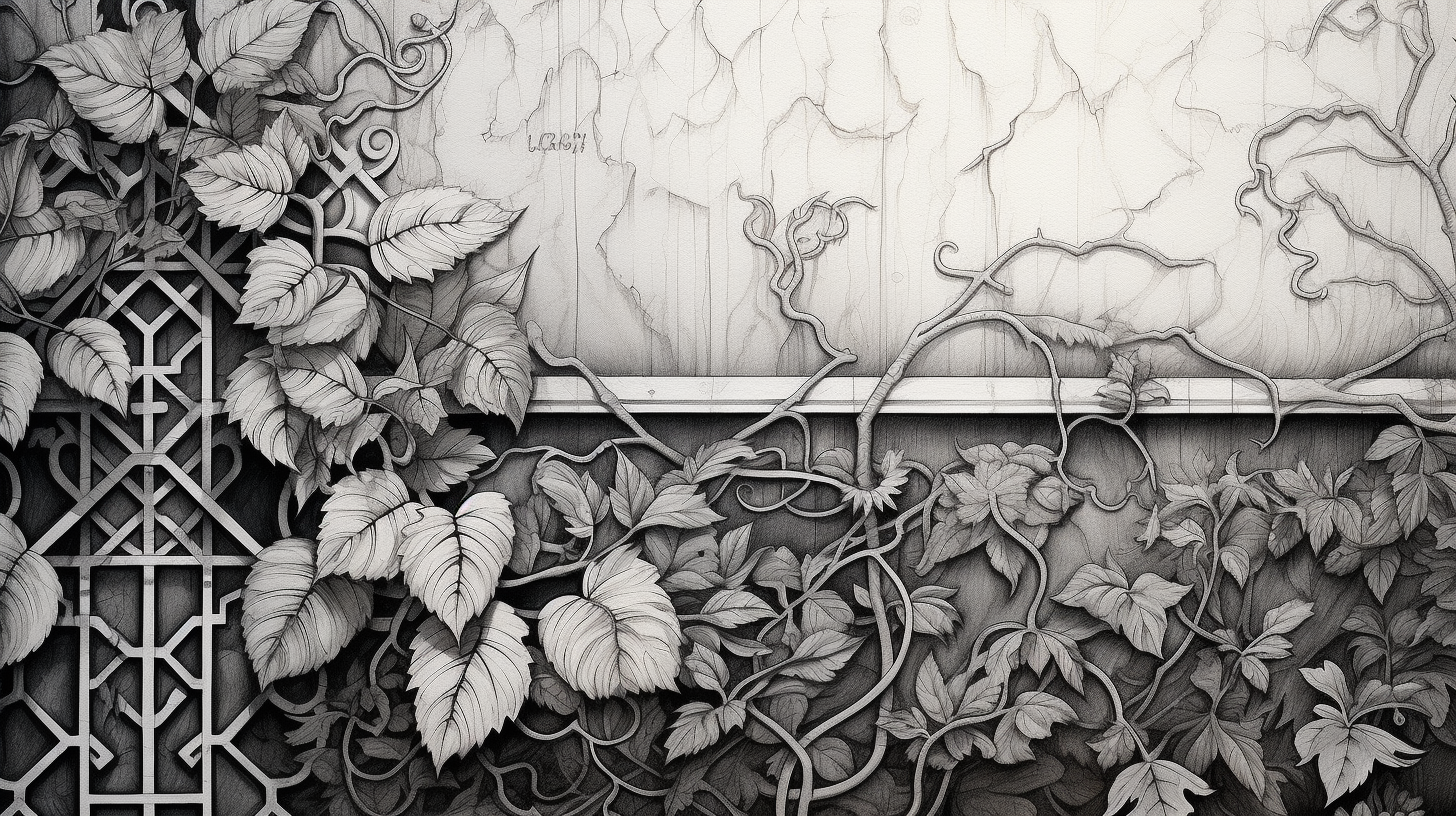
One way to find more drawing ideas is by exploring other sources of inspiration. Here are some suggestions to help spark your creativity:
- Visit art galleries or museums to see different styles and techniques.
- Look at other artists’ work online or in books for inspiration.
- Explore nature and capture the beauty of landscapes or interesting objects.
- Draw from your own experiences and memories to create personal and meaningful artwork.
- Experiment with different mediums and techniques to push your artistic boundaries.
Getting Inspired Outdoors
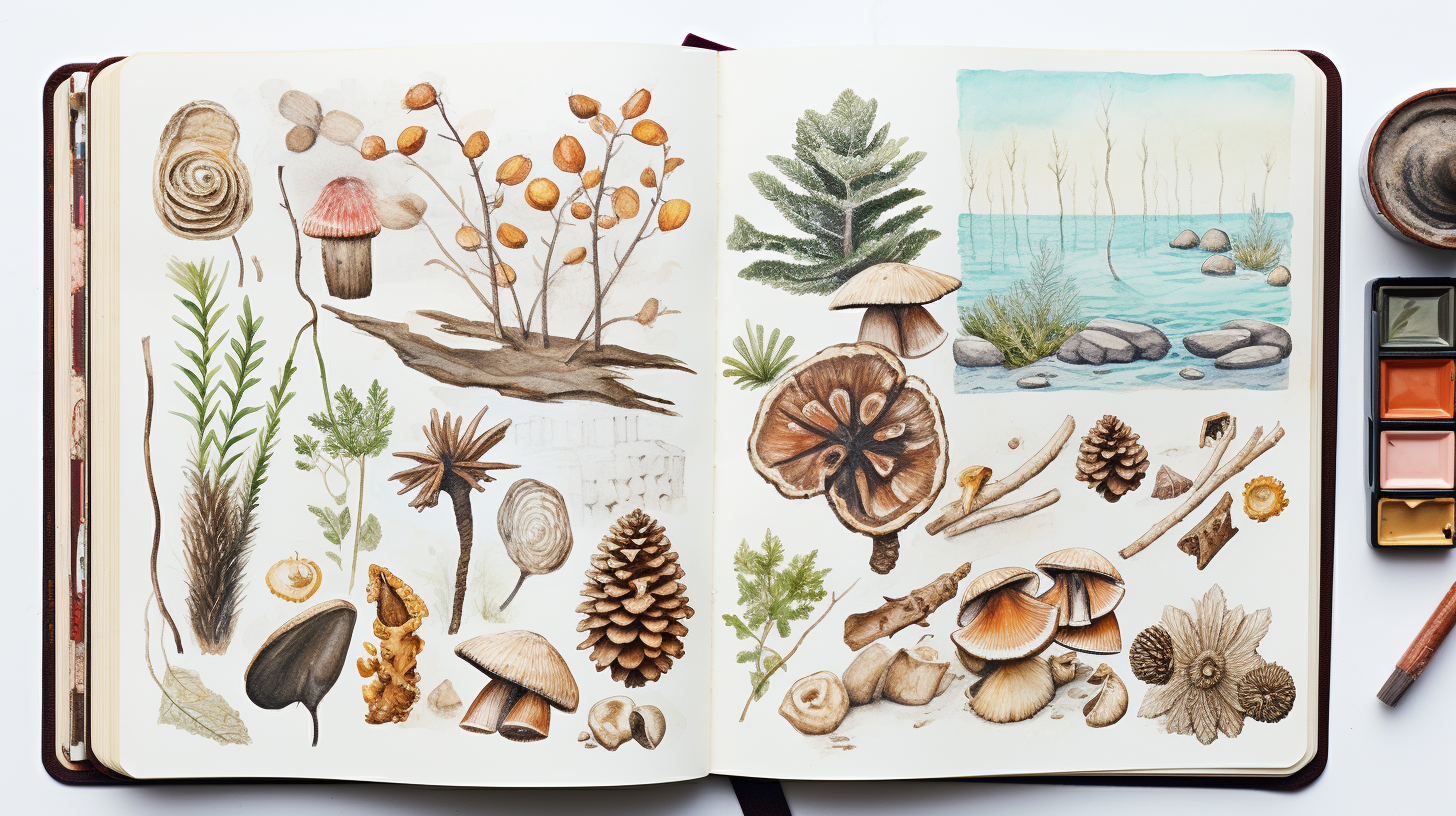
To get inspired outdoors, I can go for a walk and observe my surroundings. Nature is full of beauty and interesting objects that can spark my creativity. I can take the time to notice the way the light hits the leaves or the texture of tree bark up close.
I can also capture interesting scenes and objects by taking photographs for future reference. Sketching outdoor landscapes or buildings can help me appreciate the details and unique features of the environment. Being outside allows me to immerse myself in nature’s sights, sounds, and smells, which can all contribute to my artistic inspiration.
Benefits of a Daily Sketchbook Practice
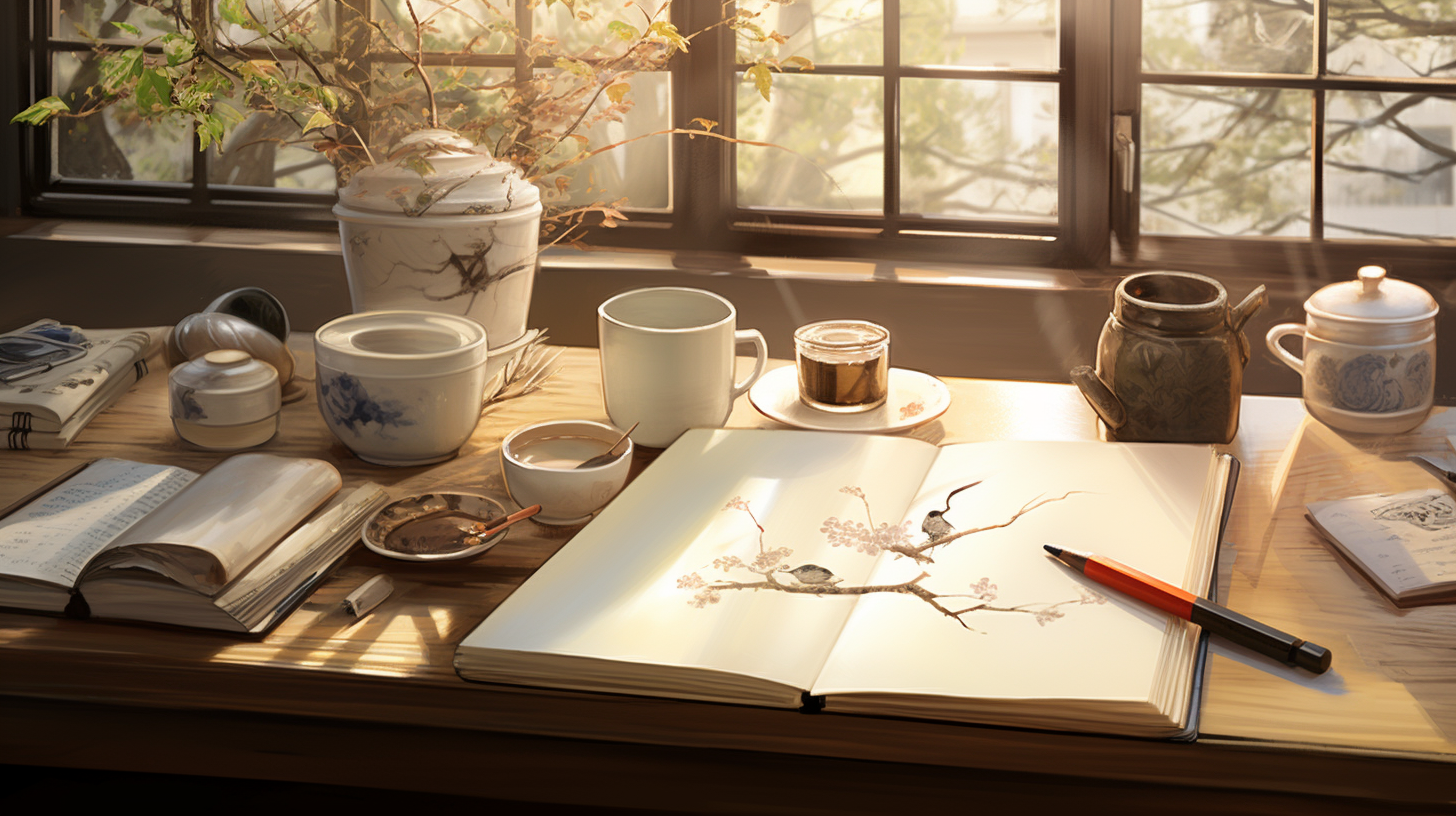
But sketching every day can bring many benefits to my artistic practice.
- Develop artistic skills and creativity:
Regular sketching helps me improve my drawing skills, experiment with different techniques, and explore new creative ideas.
- Create a safe space for experimentation and learning:
My sketchbook becomes a place where I can freely explore and try out new concepts without judgment or pressure.
- Connect with others through sharing artwork:
Sharing my sketches with others allows me to engage in conversations, receive feedback, and build a supportive community of fellow artists.
- Improve observational skills:
Daily sketching trains my eye to observe details, proportions, and textures, enhancing my ability to depict subjects accurately.
- Take a break from distractions and noise:
When I immerse myself in my sketchbook, I can momentarily escape from the busyness of life and find a calm and peaceful state of mind.
Getting Started With a Daily Sketchbook Practice
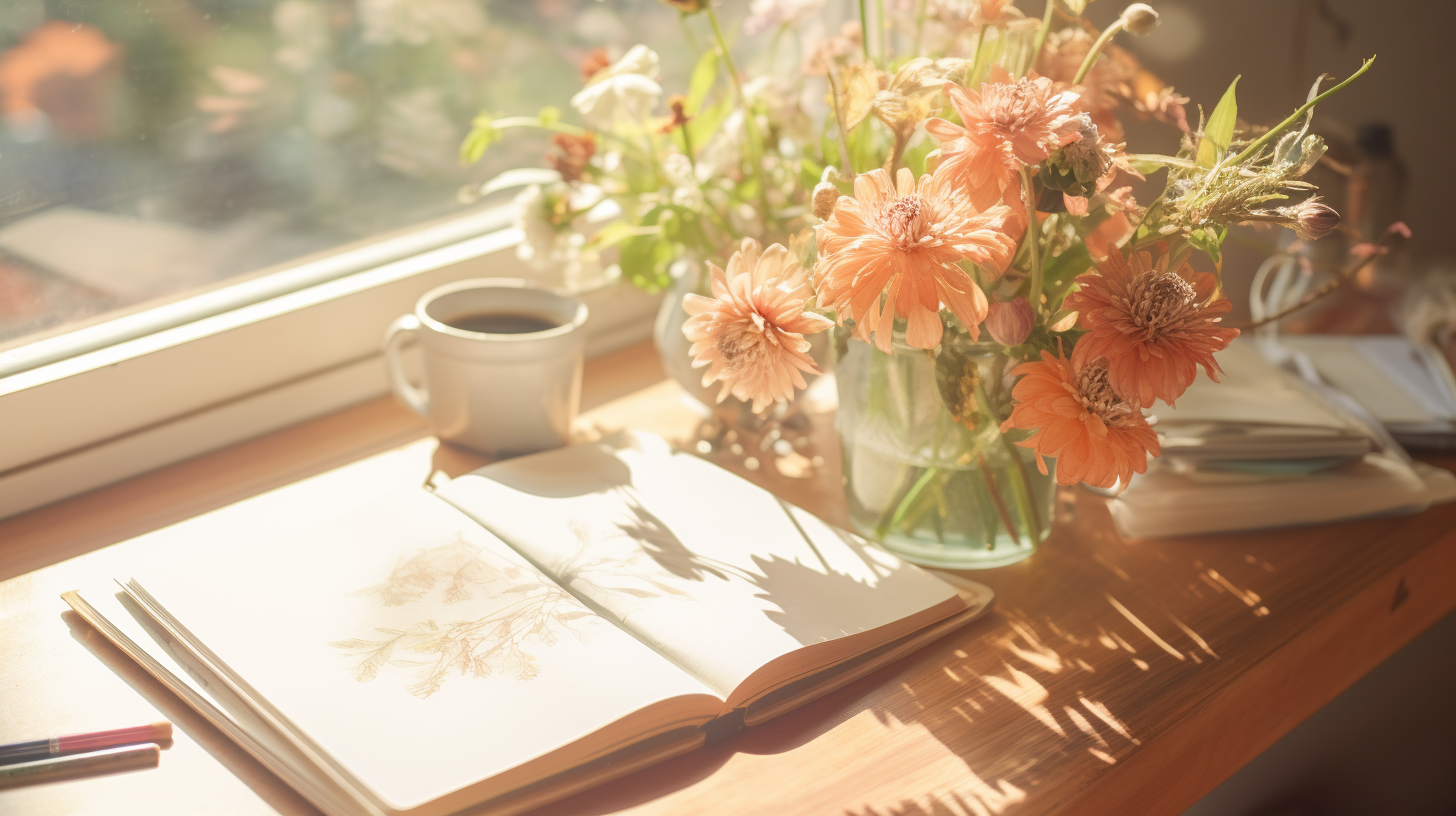
I’ll share five steps to help you begin your daily sketchbook practice.
First, set your parameters and guidelines for your practice. Decide how much time you want to dedicate to sketching each day and what subjects or themes you want to focus on.
Second, make art every day, even if it’s just a small sketch. Consistency is key in developing a daily sketchbook habit.
Third, set a time limit to stay focused and avoid getting overwhelmed. This will help you stay disciplined and maximize your practice sessions.
Fourth, choose a dedicated place to sketch where you feel comfortable and inspired. Having a designated space will make getting into the creative mindset easier.
Creating a Ritual for Your Daily Sketchbook Practice
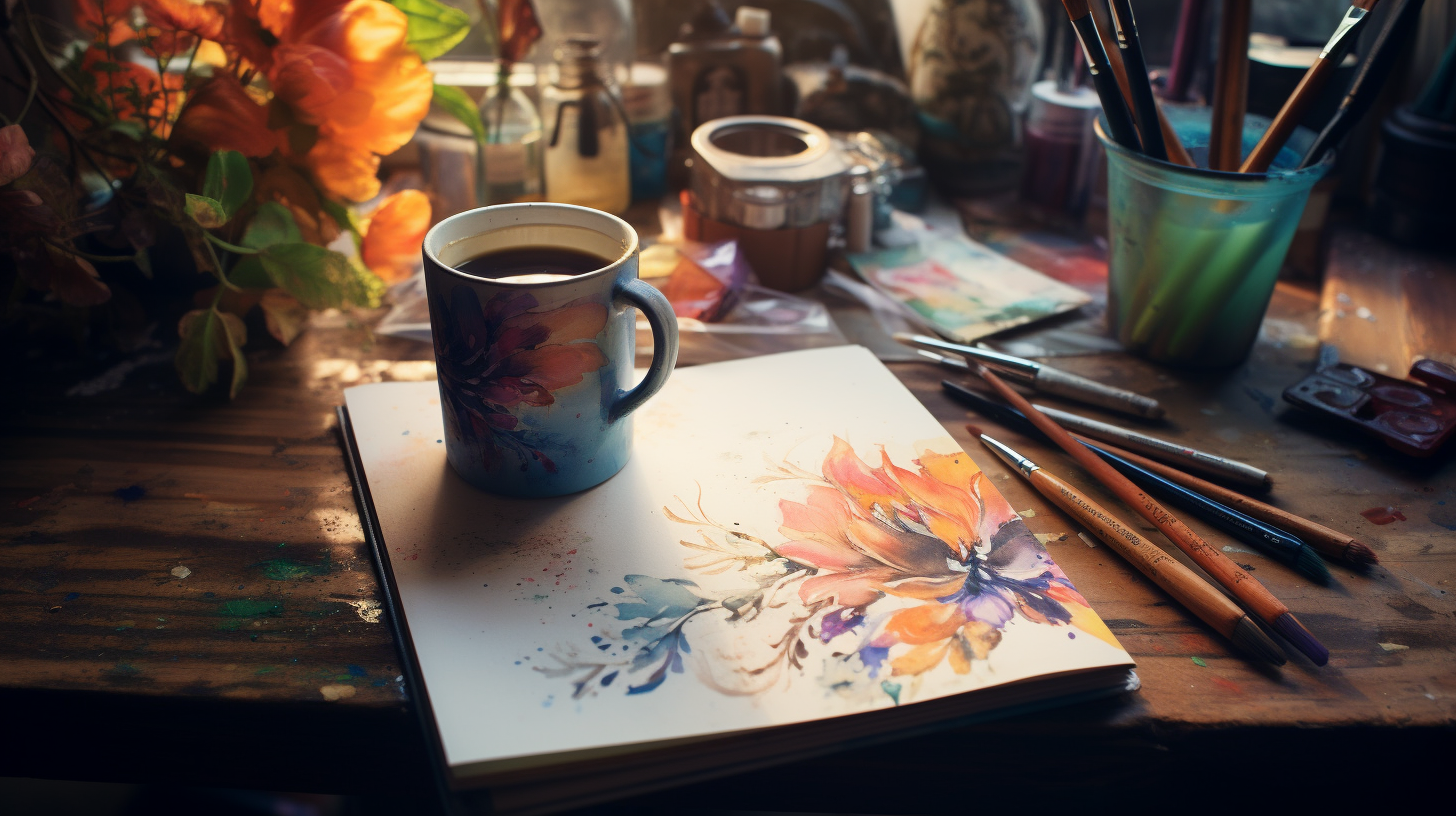
How can I personalize my sketching experience with a ritual for my daily sketchbook practice?
Creating a ritual for my daily sketchbook practice can help me establish a routine and make my sketching experience more enjoyable. Here are some ideas to consider:
- Find a comfortable and inspiring environment
- Incorporate sensory elements like candles or music
- Bring your sketching supplies with you wherever you go
- Surround yourself with your favorite things while sketching
- Set aside a specific time each day for sketching
Selecting a Sketchbook and Tools
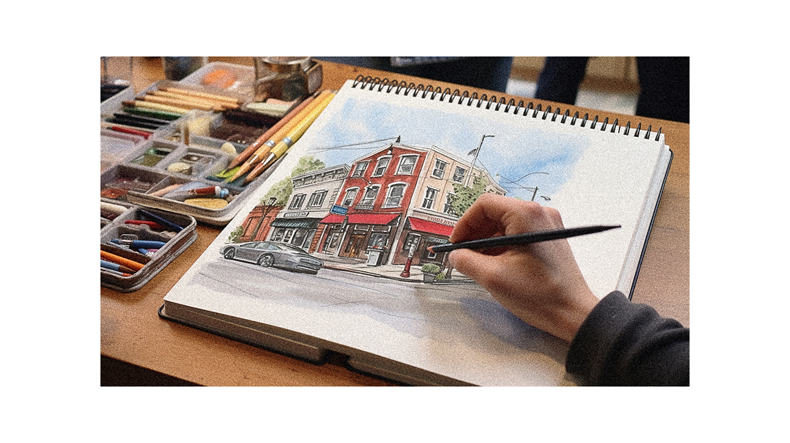
I explore different sketchbook options, such as size and paper type, to find the perfect fit for my daily sketching practice.
The size of the sketchbook is important because it determines how much space I’ve to work with. I prefer a medium-sized sketchbook that isn’t too large or too small, allowing me to have enough room for my drawings without feeling overwhelmed.
As for the paper type, I like to experiment with different surfaces like watercolor or graph paper, depending on the type of sketch I want to create.
Starting with a few basic drawing tools and colors helps me get started, and over time, I allow my preferences to develop and embrace the process of trying new materials.
Choosing Colors for Your Sketchbook
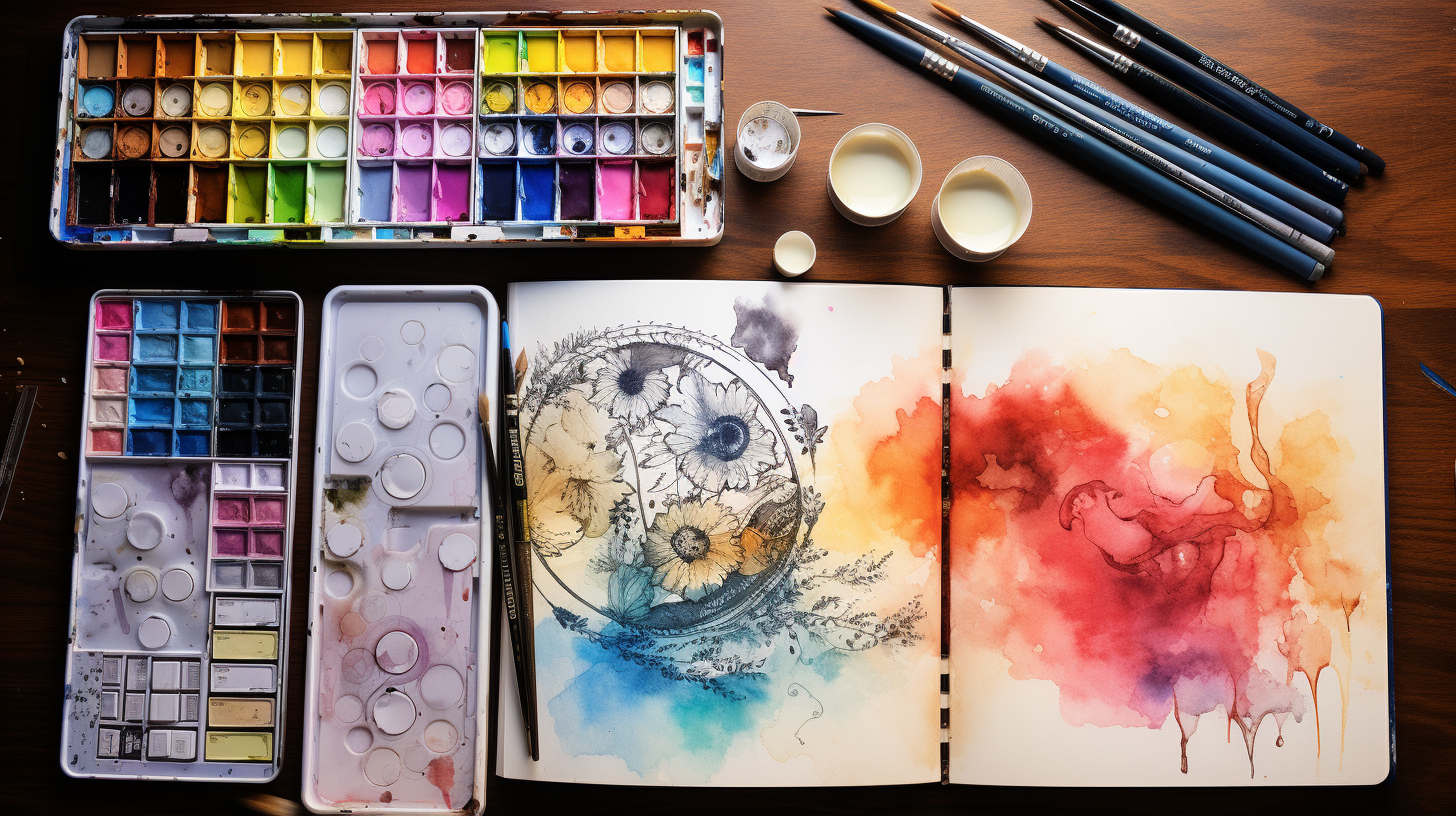
When choosing colors for my sketchbook, I prefer to consider my personal preferences and experiment with different color palettes to find what works best for my artwork. It’s important for me to have colors that inspire and motivate me during the creative process.
Here are some factors I consider when selecting colors:
- The Awakening Set: A beginner-friendly option with good mixing choices.
- The Ochre Set: Offers natural earth and ochre pigments.
- Experimentation: Trying out different color combinations to see what resonates with my style.
- Building a collection: Resisting the urge to buy too many supplies at once and enjoying the process of gradually expanding my color palette.
- Flexibility: Choosing colors that can be easily mixed and blended to create new shades and tones.
Abstract Concepts and Emotions
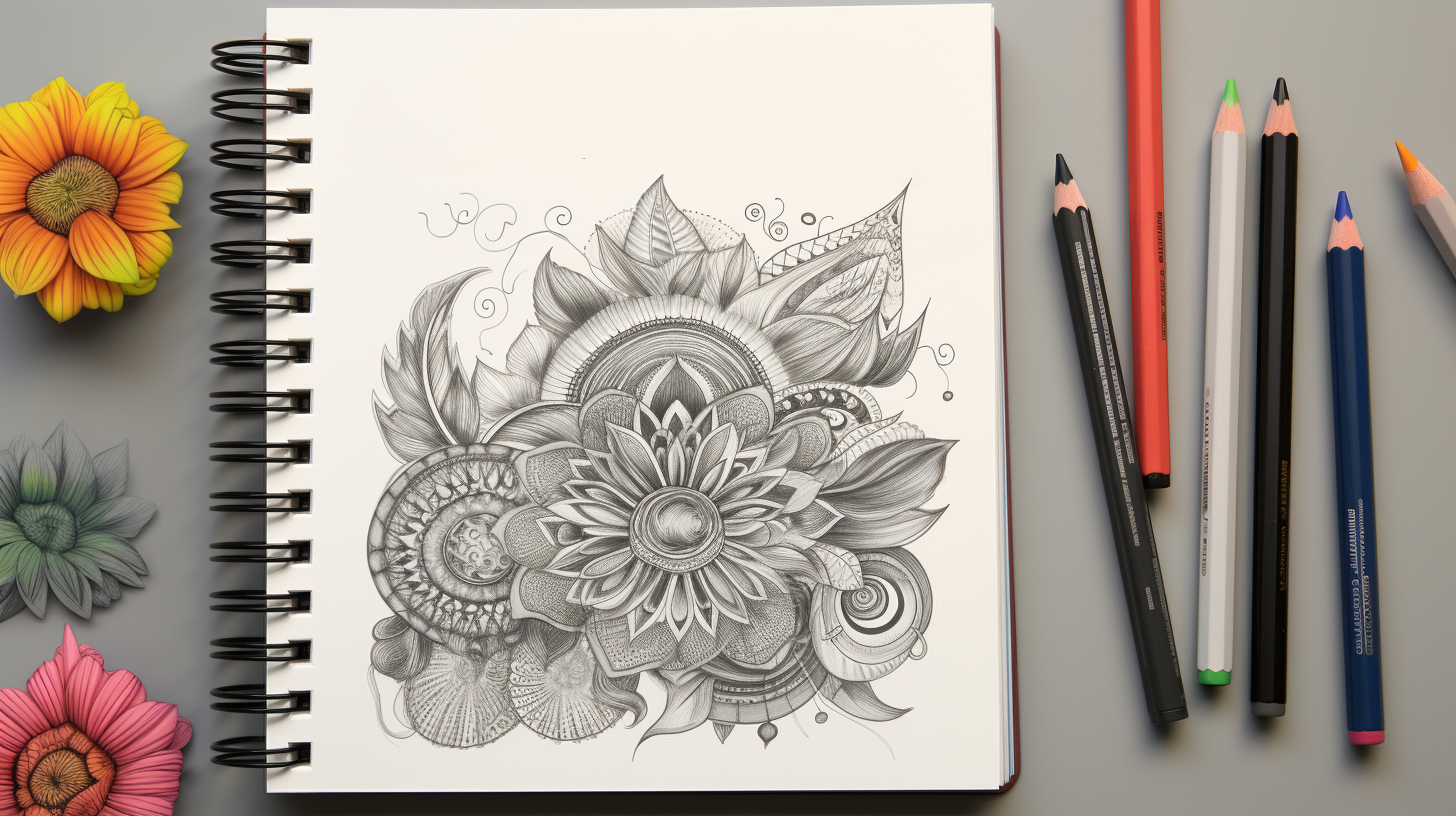
I enjoy exploring four abstract concepts and emotions in my sketchbook: love, fear, joy, and sadness. These powerful feelings evoke different images and shapes in my mind, and I find it fascinating to translate them onto paper.
When I sketch about love, I often depict flowing lines and intertwining shapes to represent the connection between two hearts.
On the other hand, fear inspires jagged lines and dark shadows, capturing the intensity and unease.
Joy is all about vibrant colors and energetic brushstrokes, while sadness is portrayed through soft, muted tones and delicate lines.
Still Life Arrangements
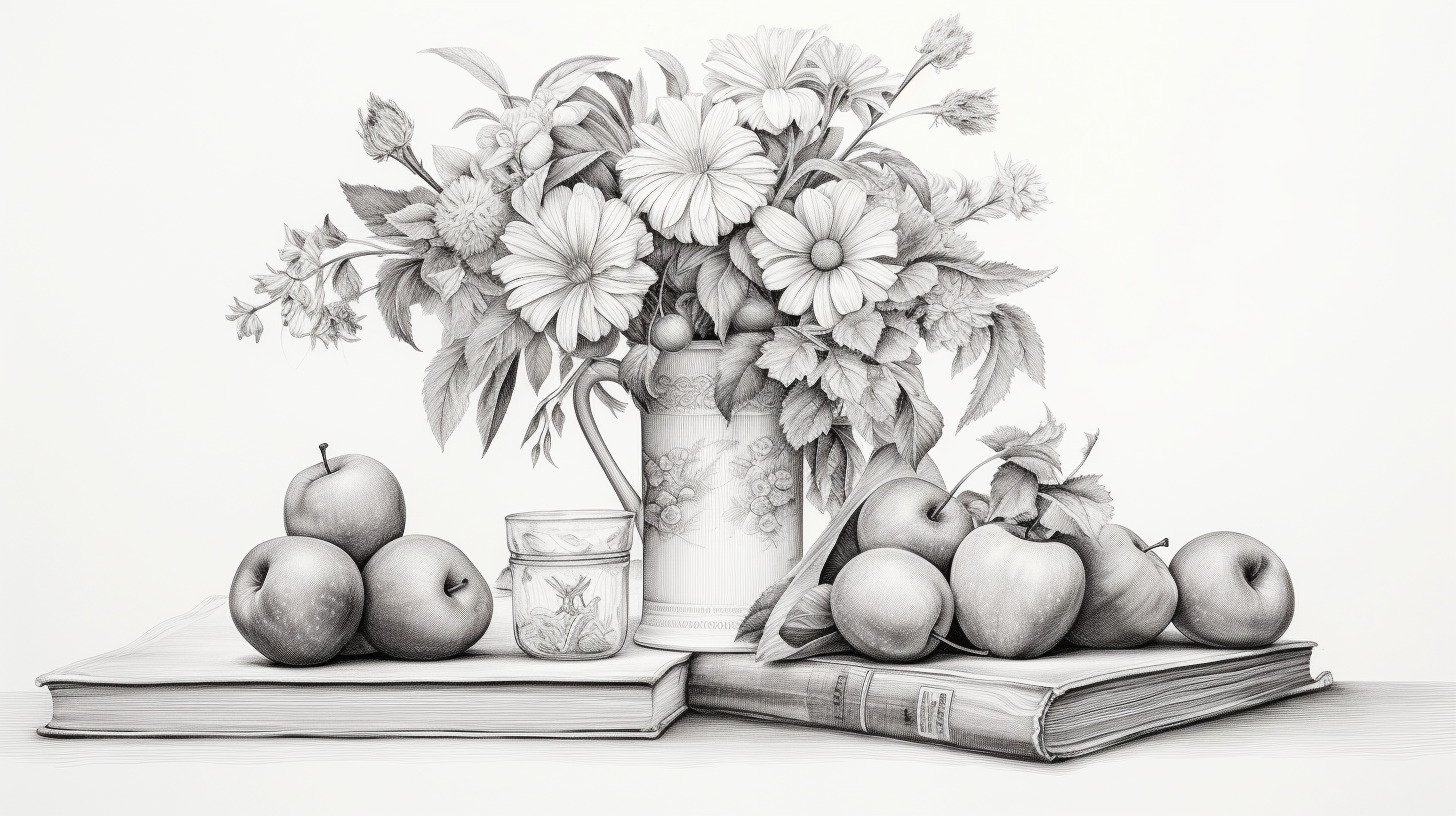
One of my favorite ways to practice drawing is sketching various still life arrangements. It lets me observe objects closely and capture their intricate details on paper. Not only does it improve my ability to depict shapes and textures, but it also enhances my understanding of light and shadow.
When creating still life arrangements, I often choose objects with personal significance or present a unique challenge. Here are some items I love to include in my compositions:
- Antique teacup and saucer
- Freshly picked flowers in a vase
- Assorted fruits in a bowl
- Vintage camera and film rolls
- Classic books stacked on a wooden table
These objects provide a range of shapes, colors, and textures that make each sketching session a delightful exploration of form and composition.
Architecture and Buildings

For my next sketchbook idea, I love exploring the world of architecture and buildings, as it allows me to capture the unique shapes and structures that surround us daily.
From towering skyscrapers to quaint houses, there’s always something fascinating to sketch. I enjoy observing the intricate details of each building, the way sunlight casts shadows on their surfaces, and the way they interact with their surroundings.
Sketching architecture helps me appreciate the artistry and craftsmanship involved in creating these structures. It also allows me to experiment with different perspectives and compositions. Whether I’m sketching a famous landmark or a hidden gem in my neighborhood, capturing the essence of a building in my sketchbook brings me a sense of joy and fulfillment.
Landscapes and Scenery
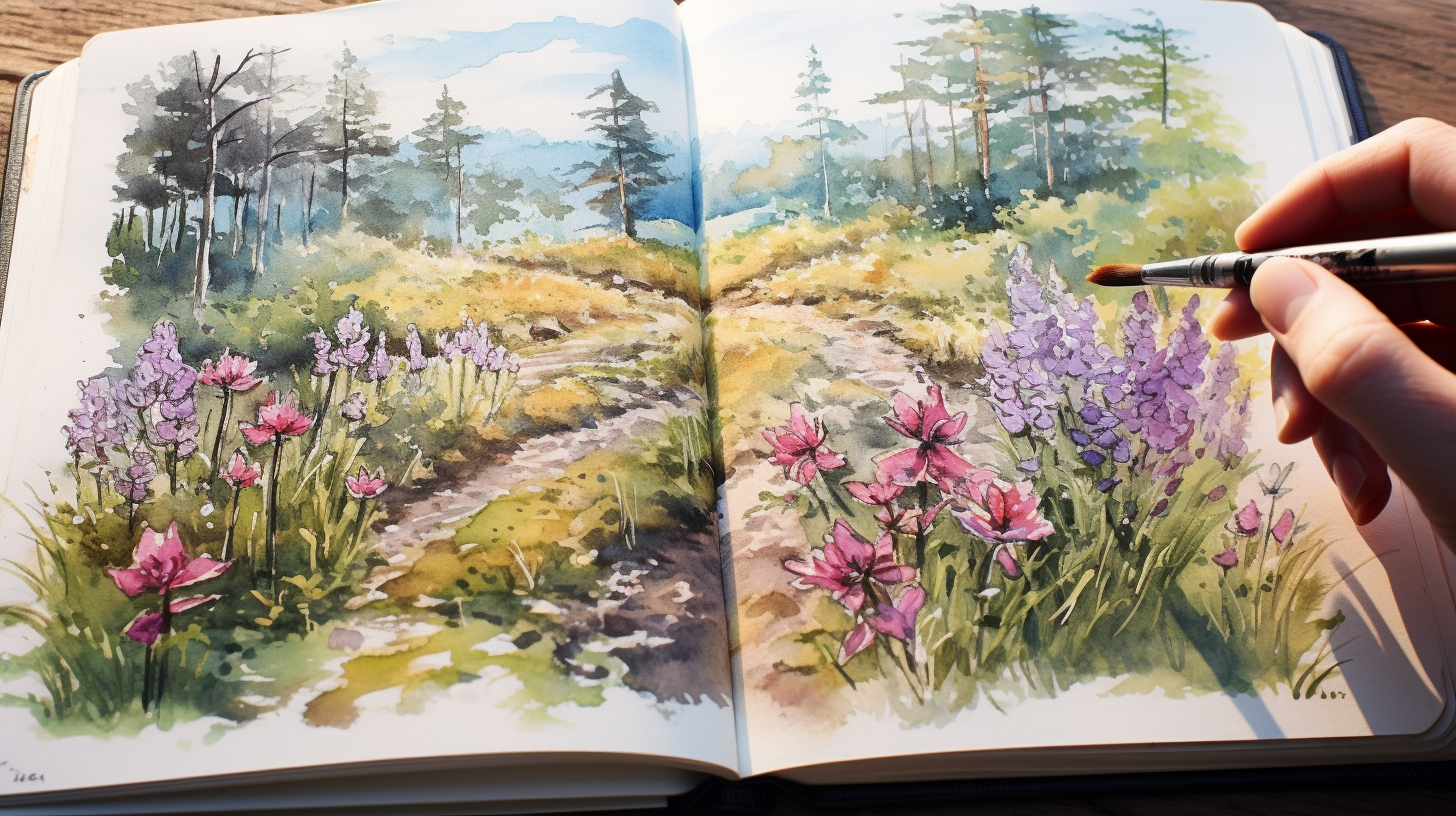
I love exploring landscapes and scenery, as they offer a variety of natural elements and breathtaking views. When it comes to sketching these beautiful scenes, there are endless possibilities to capture.
Here are a few ideas to inspire your daily practice:
- Majestic mountainscapes with towering peaks and rolling hills.
- Serene lakes are surrounded by lush forests and vibrant wildlife.
- Peaceful countryside dotted with charming farmhouses and fields of flowers.
- Tranquil beaches with crashing waves, sandy shores, and seashells.
- Enchanting sunsets cast a warm glow over the horizon.
Portraits and People
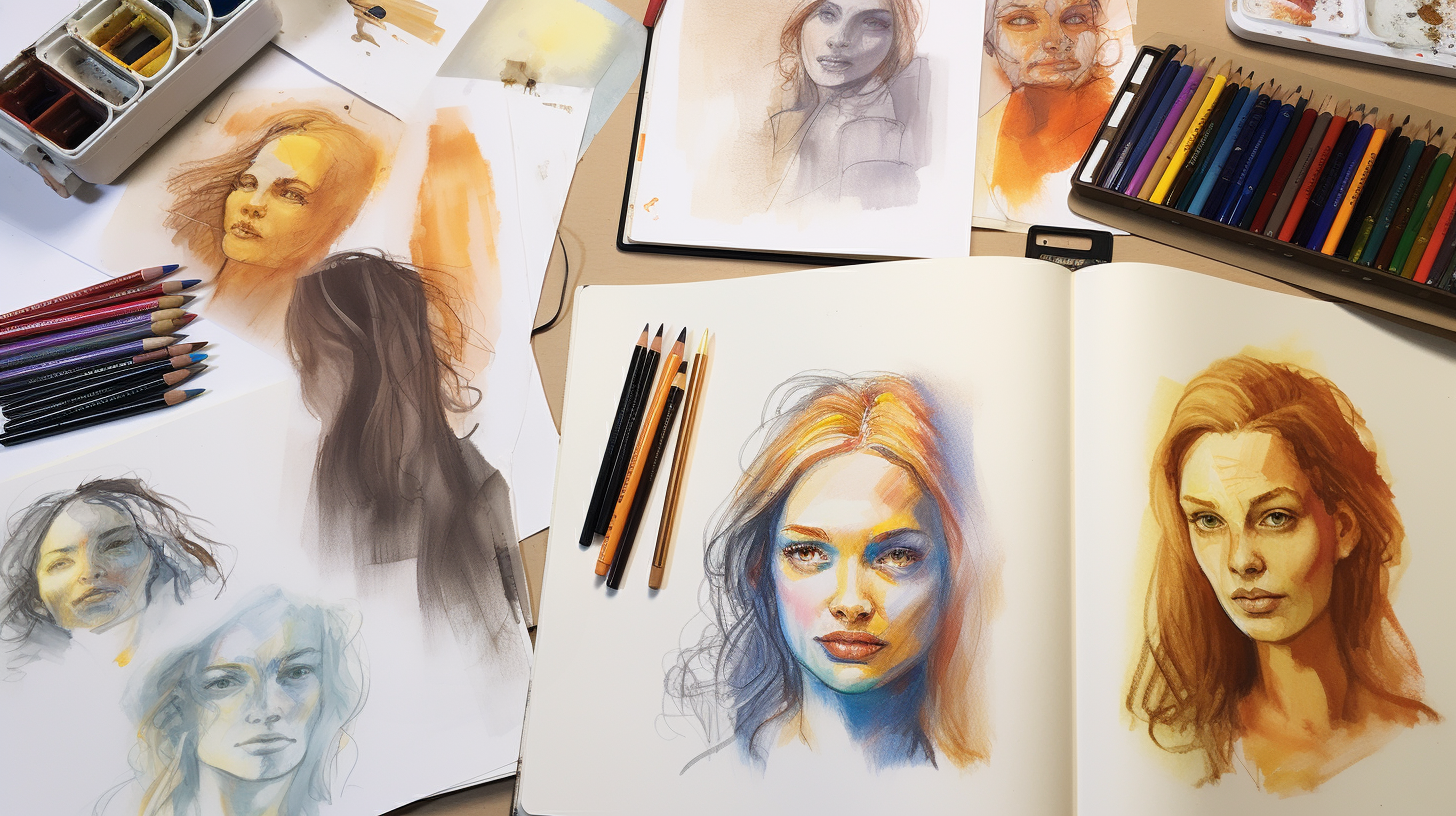
But don’t forget, capturing people’s essence and unique features can also be a fascinating subject for your daily sketchbook practice.
Portraits allow you to delve into the intricacies of facial expressions, emotions, and individual characteristics. Whether you choose to sketch friends, family members, or even strangers, each face tells a story waiting to be brought to life on your sketchbook pages.
Focus on capturing the details that make each person unique, such as the curve of their smile or the twinkle in their eyes. Don’t be afraid to experiment with different techniques and styles to truly capture your subjects’ essence.
With each portrait, you will improve your artistic skills and deepen your understanding of the human form and beauty within each individual.
Follow us on Pinterest for more tips, tutorials, and artist reviews!





